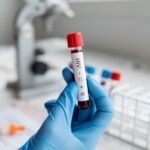[ad_1]
Feb. 17, 2022 — Nick Dawson, a 42-year old Montana-based ski instructor, knows a thing or two about ACL repairs. He has torn his anterior cruciate ligament four times and had surgery for the injury three times.
A common but painful surgery, doctors often prescribe a hefty course of opioids for pain management after the procedure. And that’s exactly the course of action Dawson’s surgeons followed. But with each repair, Dawson used fewer of the pills until finally, he opted out of taking them at all the third time around.
“The first time, I had no real idea of what to expect from my recovery, so I took the opioids as prescribed to stay ahead of the pain,” he says. “I experienced mood swings and found that the meds didn’t really take away the pain — instead, they make you not care about the pain.”
For Dawson, what worked best was a combination of a heavy dose of anti-inflammatory medicines and an ice pump the doctor sent home with him. After his second surgery, he took fewer opioids but more of the anti-inflammatory meds combined with the ice pump.
“After a couple of days of that approach, I stopped the opioids,” he says.
Finally, after the third surgery in 2012, Dawson dropped the opioids altogether, even though his doctor prescribed them.
“I figured out what I didn’t like, and also what worked best,” he says. “I really wondered why the anti-inflammatory approach wasn’t what doctors used from the start, instead of opioids.”
It appears Dawson was ahead of the curve in his self-prescribed approach. New research out of the Mayo Clinic is looking into whether patients recovering from ACL and rotator-cuff surgeries might manage pain better with medicine combinations that don’t include opioids. The results are promising, and that’s a good turn.
About 3 out of 10 opioid prescriptions are tied to orthopedic and spine conditions, according to lead Mayo researcher Kelechi Okoroha, MD. The standard prescription is for 30 to 60 pills, lasting patients for up to 2 weeks. Not using opioids after these surgeries could help cut the high rate of opioid addiction and sometimes subsequent death.
“Certain patients are just going to be more apt to addiction, even after a brief introduction,” Okoroha says.
The U.S. Health and Human Services Department estimates that 70,630 people died from opioid overdose in 2019, while 10.1 million people misused the drugs.
“Opioids are pretty standard post-surgery here in the United States,” says Okoroha. “We have the perception that there should be no pain following surgery.”
This approach and belief date back to the mid-1990s, when OxyContin appeared on the market as a “gentler” class of opioids, marketed as less addictive. Insurance companies and doctors bought in, and by 2017, the U.S. had a public health crisis with opioid addiction. Now doctors are looking for ways to break the cycle.
Even before this round of orthopedic research, as a surgeon himself, Okoroha began looking into ways to stop the use of opioids in joint replacement procedures. Finding success there — patients found the protocol as effective or more so than opioids — Okoroha decided to move on to other areas of orthopedic procedures to see if he could produce the same results.
Comparing Protocols
Breaking their research into two studies, the Mayo team first investigated the alternative medication protocol with 62 ACL repair patients, dividing them into two groups: one using the standard opioid plan of hydrocodone and acetaminophen. With the second group, the researchers used nerve blockers, acetaminophen, muscle relaxers, and a nonsteroidal anti-inflammatory drug (NSAID).
“This provided multiple agents targeting multiple sources of pain,” explains Okoroha.
Patients were asked to rate pain using the visual analog scale (VAS), which ranges from “no pain” to “worst pain.” All patients in the non-opioid group reported satisfactory pain management and minimal side effects. This applied even a week after surgery.
The second group was made up of 40 patients receiving repair for rotator cuff surgery. Of those, 23 were in the traditional opioid group and 17 made up the non-opioid group. On days 1 and 4 after surgery, the traditional group reported significantly higher pain levels on the VAS scale. The non-opioid group scored significantly lower at every point measured.
All the patients in both studies received a nerve block before surgery. Dawson says doctors used this approach during his third ACL surgery.
“I felt like that helped significantly in managing the first 24 hours of pain,” he says.
Rehab remained the same after surgery for both the ACL and rotator cuff study groups. Okoroha was pleased with the results.
“The main takeaway is that we don’t have to turn to opioids following common sports surgeries,” he says. “Our thinking is that if we can apply it to these orthopedic procedures, we can apply it to others as well.”
In both studies, patients reported side effects ranging from drowsiness and dizziness to gastrointestinal symptoms. But in the rotator cuff study, patients receiving the experimental protocol fared slightly better.
Okoroha says more research into the new pain treatment plans in other orthopedic surgeries will follow.
In the meantime, “it’s up to providers to see if their patients can manage without opioids,” he says. “If we can combine the evidence with adoption, we can eventually change the standard practice.”
[ad_2]
Source link






